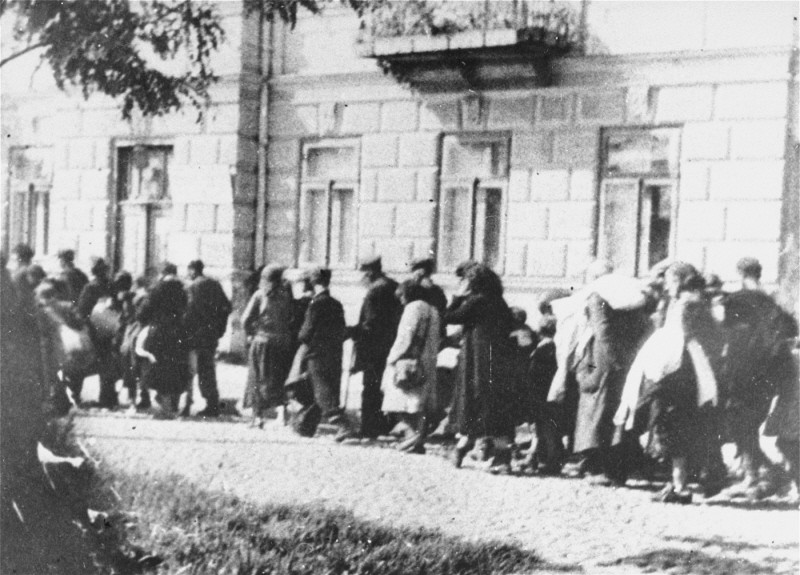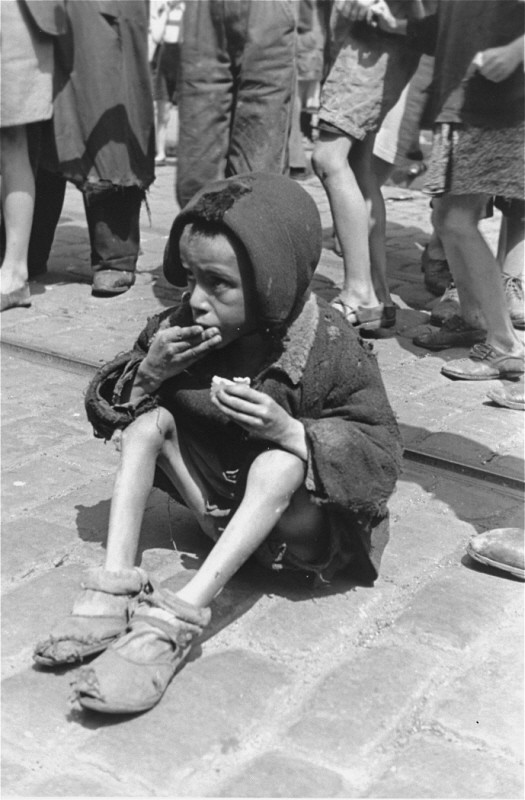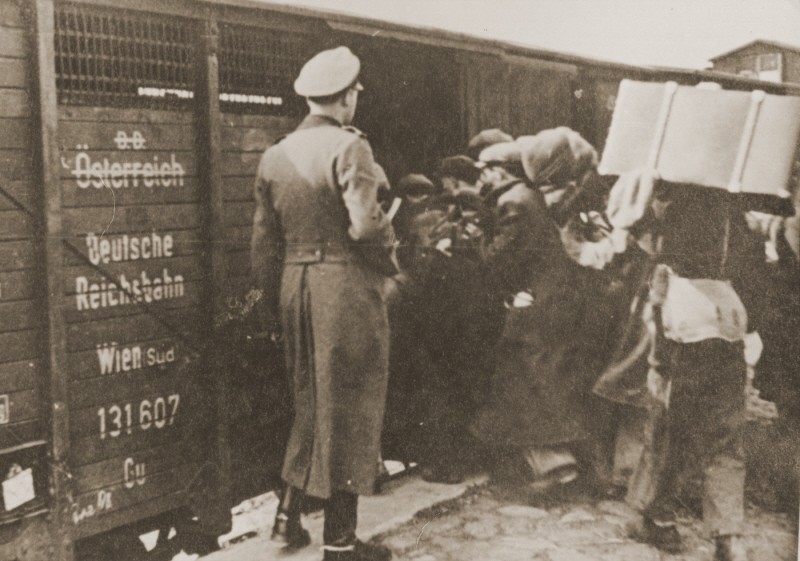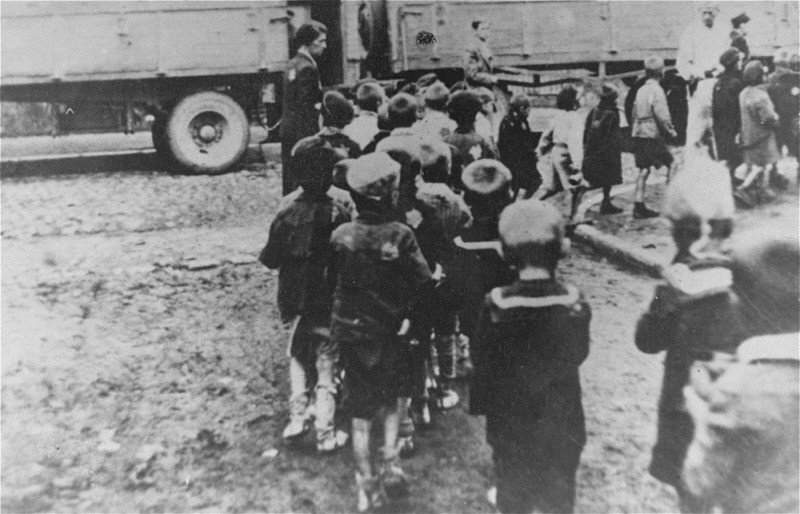
"Final Solution": Overview
The term “Final Solution of the Jewish Question” was a euphemism used by Nazi Germany’s leaders. It referred to the mass murder of Europe’s Jews. It brought an end to policies aimed at encouraging or forcing Jews to leave the German Reich and other parts of Europe. Those policies were replaced by systematic annihilation.
Key Facts
-
1
It is unclear when exactly Hitler decided to murder Europe’s Jews. The decision was probably made sometime in 1941, with the invasion of the Soviet Union.
-
2
On January 20, 1942, Reinhard Heydrich, the chief of Germany’s Security Police, held a secret meeting known as the Wannsee Conference. Leading police and civilian officials discussed the continuing implementation of the "Final Solution."
-
3
The Nazi leaders envisioned killing 11 million Jews as part of the “Final Solution.” They succeeded in murdering 6 million.
What Was the "Final Solution"?
The Nazi "Final Solution to the Jewish Question" ("Endlösung der Judenfrage") was the deliberate and systematic mass murder of European Jews. It was the last stage of the Holocaust and took place from 1941 to 1945. Though many Jews were killed before the "Final Solution" began, the vast majority of Jewish victims were murdered during this period.
It is not known when the leaders of Nazi Germany definitively decided to implement the "Final Solution." What is clear, however, is that the “Final Solution” was the culmination of a decade of increasingly severe discriminatory, anti-Jewish measures implemented by the Nazis. Today, the "Final Solution" is used as a synonym for the genocide of Europe’s Jews.
Anti-Jewish Policy Escalates
Under the rule of Adolf Hitler, the persecution and segregation of Jews was implemented in stages. After the Nazi Party achieved power in Germany in 1933, its state-sponsored racism led to anti-Jewish legislation, economic boycotts, and the violence of the Kristallnacht ("Night of Broken Glass") pogroms, all of which aimed to systematically isolate Jews from society and drive them out of the country.

After the September 1939 German invasion of Poland (the beginning of World War II), anti-Jewish policy escalated to the imprisonment and eventual murder of European Jewry. The Nazis first established ghettos (enclosed areas designed to isolate and control the Jews) in the Generalgouvernement (a territory in central and eastern Poland overseen by a German civilian government) and the Warthegau (an area of western Poland annexed to Germany). Polish and western European Jews were deported to these ghettos where they lived in overcrowded and unsanitary conditions with inadequate food.
Massive Killing Operations Begin
After the June 1941 German invasion of the Soviet Union, SS and police units (acting as mobile killing units) began massive killing operations aimed at entire Jewish communities. By autumn 1941, the SS and police introduced mobile gas vans. These paneled trucks had exhaust pipes reconfigured to pump poisonous carbon monoxide gas into sealed spaces, killing those locked within. They were designed to complement ongoing shooting operations.
On July 17, 1941, four weeks after the invasion of the Soviet Union, Hitler tasked SS chief Heinrich Himmler with responsibility for all security matters in the occupied Soviet Union. Hitler gave Himmler broad authority to physically eliminate any perceived threats to permanent German rule. Two weeks later, on July 31, 1941, Nazi leader Hermann Goering authorized SS General Reinhard Heydrich to make preparations for the implementation of a "complete solution of the Jewish question."
Killing Centers

In the autumn of 1941, SS chief Heinrich Himmler assigned German General Odilo Globocnik (SS and police leader for the Lublin District) with the implementation of a plan to systematically murder the Jews of the Generalgouvernement. The code name Operation Reinhard was eventually given to this plan, named after Heydrich (who was assassinated by Czech partisans in May 1942). As part of Operation Reinhard, Nazi leaders established three killing centers in Poland—Belzec, Sobibor, and Treblinka—with the sole purpose of the mass murder of Jews.
The Majdanek camp served from time to time as a killing site for Jews residing in the Generalgouvernement. In its gas chambers, the SS killed tens of thousands of Jews, primarily forced laborers too weak to work. The SS and police killed at least 167,000 Jews, as well as approximately 4,300 Roma (Gypsies), in gas vans at the Chelmno killing center about thirty miles northwest of Łódź. In the spring of 1942, Himmler designated Auschwitz II (Auschwitz-Birkenau) as a killing facility. SS authorities murdered approximately one million Jews from various European countries at Auschwitz-Birkenau.
German SS and police murdered nearly 2,700,000 Jews in the killing centers either by asphyxiation with poison gas or by shooting. In its entirety, the "Final Solution" called for the murder of all European Jews by gassing, shooting, and other means. Six million Jewish men, women, and children were killed during the Holocaust—two-thirds of the Jews living in Europe before World War II.

Critical Thinking Questions
When did the German public find out about each step towards the “Final Solution”?
When did the news of each step towards the “Final Solution” reach the west and the public in other countries?
How can knowledge of the events in Germany and Europe before the Nazis came to power help citizens today respond to threats of genocide and mass atrocity in the world?
Euphemisms, mild or indirect words or expressions substituted for ones considered to be too harsh or blunt, can hide dangerous or illegal behavior. What expressions did the Nazis use to disguise their intentions or policies?

